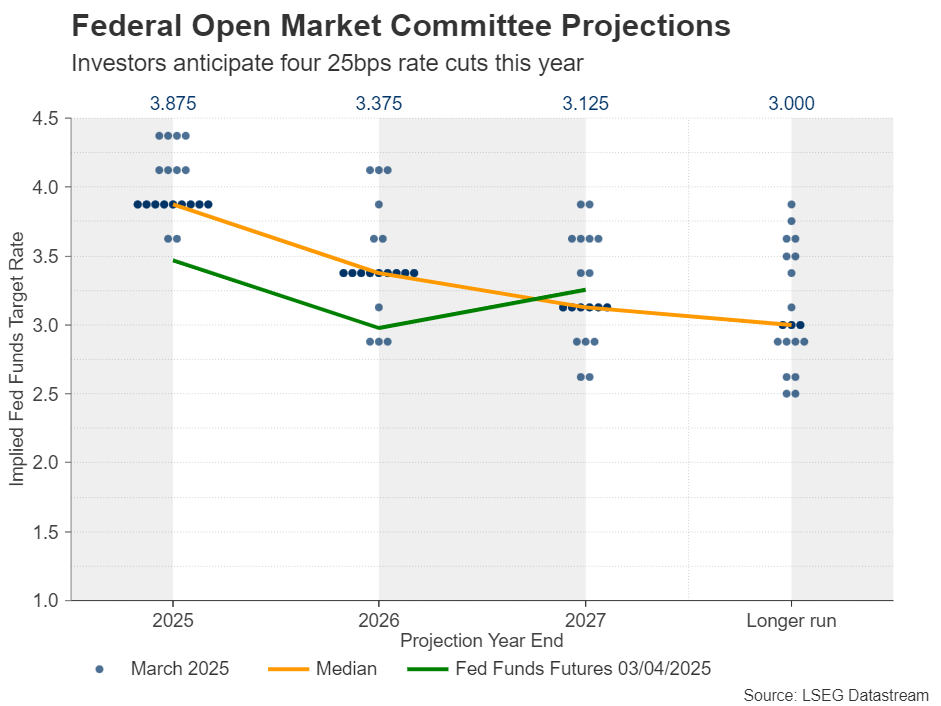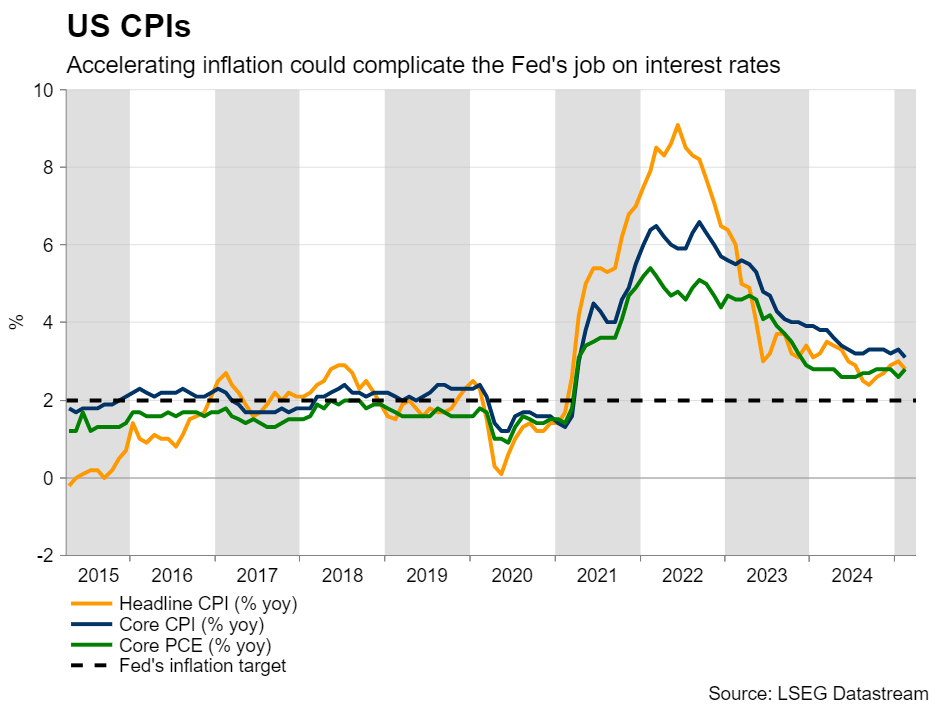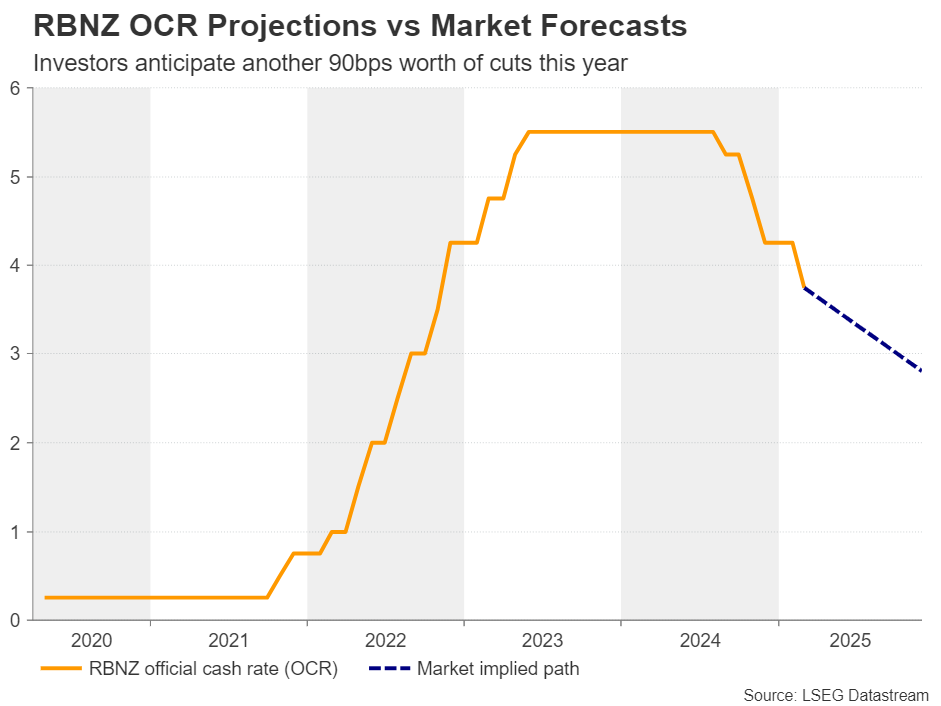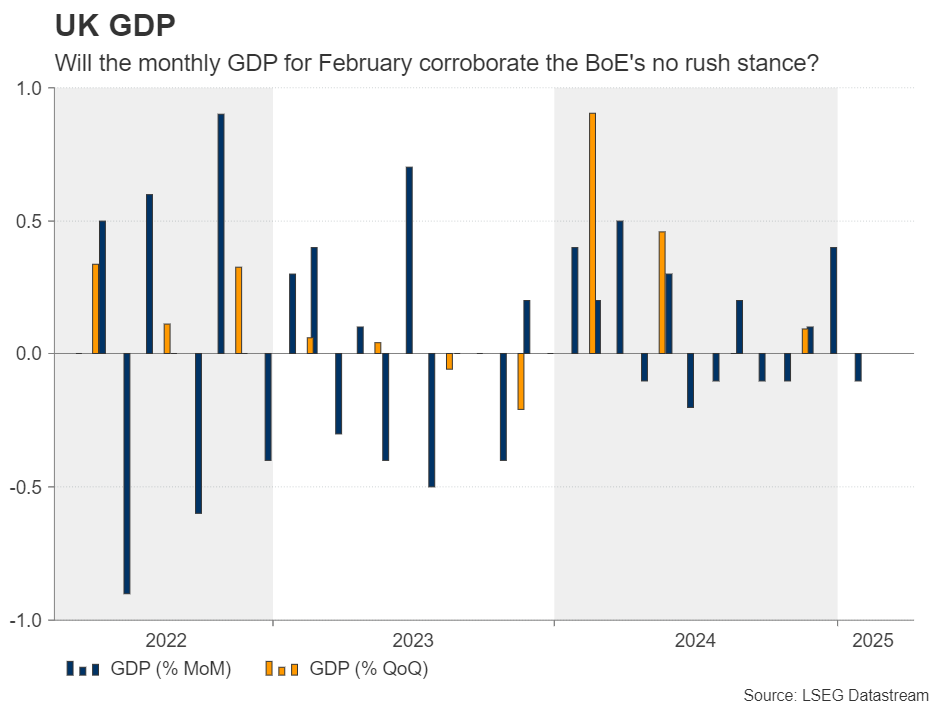- Dollar traders await US CPI data amid global trade turbulence
- RBNZ to cut by 25bps, could maintain dovish stance
- China’s CPI and PPI to reveal tariff impact on inflation
- Strong UK GDP data could help the pound climb highe
Trump’s “Liberation Day” increases recession fears
The US dollar suffered against all its major peers this week, while equites extended their bloodbath after US President Donald Trump announced more aggressive-than-anticipated tariffs on US trading partners.
Trump stated that his administration will proceed with a 10% baseline tariff on all imports to the US, while higher duties will be imposed on some of the nation’s biggest trading partners. For example, China was hit with a new 34% levy on top of the already imposed 20%, while closer allies like Japan and the UK were not exempted, with the former facing a 24% tariff rate and the latter the baseline 10%. The European Union will be subject to a 20% rate. The base 10% tariffs will go into effect on April 5 and the higher reciprocal rates on April 9, and both China and the EU were quick to respond that if those tariffs take effect, they will retaliate.
With the Atlanta Fed GDPNow model already pointing to a severe 3.7% contraction of the US economy, investors have become even more fearful about a potential recession this year, which is also evident by the fact that they have ramped up their Fed rate cut bets, despite the central bank sticking to its prior projection of 50bps worth of reductions for this year.
Currently, investors are pricing in nearly 100bps worth of cuts by December, which translates into four quarter-point cuts.
Will Sticky Inflation Complicate the Fed’s Job
With all that in mind, dollar traders will fix their attention on the US CPI data for March, due out on Thursday. Tariffs are not only posing a threat to economic activity but also presenting an upside risk to inflation. Inflation in the US has been proving more persistent than expected, even before tariffs on steel and aluminium were incorporated into the calculation, with the core PCE index for February rising to 2.8% y/y.
This further complicates the Fed’s work as it may find itself between a rock and a hard place – trying to safeguard economic activity on the one hand and prevent inflation from spiralling out of control on the other. With the prices subindex of the ISM manufacturing PMI for March climbing to 69.4 from 62.4, the risks of the CPIs appear skewed to the upside.
Further acceleration may prompt traders to scale back some of their rate cut bets, and the dollar may stage a modest rebound alongside US Treasury yields. However, higher borrowing costs for longer could risk an even deeper recession down the line. Thus, with recession fears still elevated, any recovery in the US dollar could prove both limited and short-lived.
The minutes from the March 18-19 FOMC decision will be published on Wednesday, the PPI numbers for March on Thursday, and the preliminary University of Michigan (UoM) consumer sentiment index for April on Friday. Given that the latest Fed meeting took place before the April 2 tariff announcements – and bearing in mind that new economic projections, including a new dot plot, were released – the minutes may not draw significant market attention. Investors may instead focus more on additional signs of where inflation may be headed. Thus, beyond the CPI numbers, the PPI data and the UoM inflation expectations could also act as key market movers.
RBNZ Set to Cut Rates, Focus to Fall on Guidance
There is also a central bank deciding on monetary policy next week and that’s the Reserve Bank of New Zealand (RBNZ). At its latest gathering on February 19, this central bank lowered its benchmark interest rate by 50bps, signalling the likelihood of more reductions in the coming months and projecting that rates will be around 3% by year-end – 75bps below the current level of 3.75%. Officials also cited global uncertainties and domestic economic risks relating to US President Trump’s trade policies.
Since then, the only noteworthy economic data released from New Zealand have been the retail sales and GDP prints for Q4, both of which exceeded expectations. Yet, investors believe that the Bank should implement an additional 90bps in rate cuts before the end of the year.

With China, New Zealand’s main trading partner, being Trump’s primary focus when it comes to tariffs, it is difficult to envision a scenario where the RBNZ adopts a less dovish tone than it did previously. Market participants are nearly certain about a 25bps cut at this gathering, with the probability of a back-to-back quarter-point reduction in May standing at 75%.
Taking all this into account and considering the heightened risk that the trade war between the US and China could further escalate if China retaliates, the RBNZ may once again accompany its rate decision with a clear signal of its readiness to continue easing. This would likely encourage kiwi sellers to extend their positions.
China Inflation and UK GDP Also on the Agenda
Speaking of China, during the Asian morning on Thursday, the world’s second-largest economy will release its CPI and PPI numbers for March and traders may be eagerly waiting to see the impact of the tariffs announced back on March 4 on consumer prices.
From the UK, the monthly GDP for February is due to be released on Friday, alongside the industrial and manufacturing production figures for the same month. UK data has been coming in slightly better than expected, with GDP for Q4 revealing moderate expansion despite forecasts of contraction. However, the monthly reading for January showed negative growth. The composite PMI improved in March, and retail sales for February significantly exceeded expectations.
Combined with the fact that UK inflation remains elevated despite slowing somewhat in February, the overall economic outlook supports the Bank of England’s stance that there is no urgency to cut rates aggressively, especially after the UK was subject only to the US baseline 10% tariff. However, market participants are still assigning a high 85% probability to a 25bps reduction at the next decision on May 8. Therefore, a strong set of data may be required to reduce that probability and allow the pound to gain further ground.
